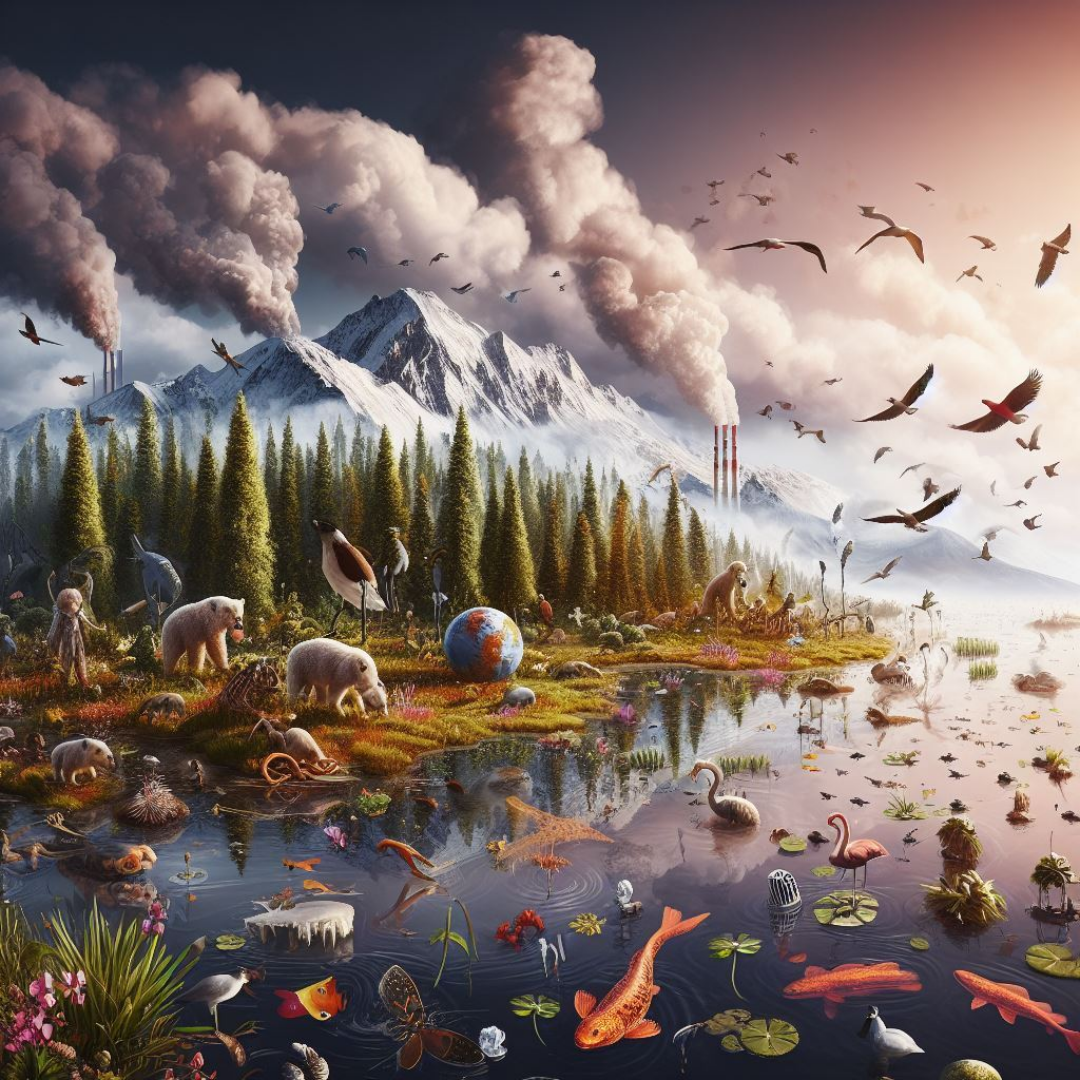The increase in vector-borne diseases shows the link between climate change, zoological diversity, and public health.

Climate change is a worldwide occurrence that has significant consequences for biodiversity, especially in the field of zoology. This thorough analysis brings together current research on the complex effects of climate change on animal diversity, covering a variety of species and ecosystems. The world’s wildlife and environments are also impacted by climate issues, like humans. Increased temperatures have the potential to cause fragile ecosystems to collapse and cause a large wave of extinctions. Health and climate change are intertwined in their widespread effects on zoological diversity.
Zoological diversity refers to the variety of animal life on Earth. It encompasses the diversity of animal species as well as the diversity within animal species, such as genetic diversity and phenotypic diversity.
The delicate balance of ecosystems is disturbed as a result of rising temperatures and habitat changes, which opens the door for zoonotic illnesses to spread from animals to people. Changes in migration patterns and mating seasons may result in more encounters between people and wildlife, which could help with illnesses.
The increase in vector-borne diseases shows the link between climate change, zoological diversity, and public health. In warm and humid areas, mosquitoes, ticks, and other vectors thrive, spreading their reach and leading to a rise in diseases such as malaria, dengue fever, and the Zika virus. These problems are made more complex by the fact that these diseases not only impact people but also have an impact on wildlife.
Habitat changes:
As the temperature continues to rise and precipitation patterns change, the distribution of vegetation is also affected. This has a direct impact on the habitats of various animal species. Unfortunately, some species are losing their preferred habitats while others are gaining new ones. It’s a tough situation for the animals, and we must do everything we can to mitigate the damage caused by these changes.
Modifications to Migration Patterns:
Several kinds of animals, such as birds, mammals, fish, and insects, depend on particular temperatures and environmental signals to start their migration. Any alterations to these signals can disturb their pre-existing migration pathways, which can impact their feeding and breeding areas.
Variations in Breeding Seasons:
Variations in temperature and food supply can affect the reproductive cycles of a number of species. The availability of resources and the requirements of the next generation may not match as a result.
Extinctions of species:
One of the main causes of species extinction, habitat loss, is being exacerbated by climate change. A higher danger of extinction exists for species that are unable to adapt, relocate to more suitable habitats, or alter their behavioural patterns.
Oceanic Acidification
The rise in carbon dioxide levels in the atmosphere results in greater absorption of CO2 by the oceans, leading to ocean acidification. This has a detrimental impact on marine life, especially organisms with calcium carbonate shells or skeletons like corals and certain shellfish.
Bleaching of coral:
Rising sea temperatures cause coral bleaching, where corals expel colourful algae and become vulnerable to disease and death, impacting marine ecosystems.
Polar Ecosystem Disruption
The Arctic and Antarctic regions are warming rapidly, causing habitat loss for ice-dependent creatures like polar bears, penguins, and seals.
Modified predator-prey dynamics
Changes in habitat and food resource availability may result in variations in predator-prey interactions, which may have an impact on population levels and community structures.
Disease Transmission:
Warmer temperatures can cause disease-carrying vectors like mosquitoes and ticks to expand their ranges, leading to an increased spread of diseases such as malaria and Lyme disease, affecting both humans and wildlife.
Physiological and behavioral changes:
As environmental conditions change, some animals may modify their behaviours, including feeding and mating cycles. Other people might have physiological changes, such as changing their metabolic rates.
Changes in Symbiotic Relationships:
Numerous species depend on certain relationships with other species to survive. These connections, like those between plants and the pollinators that help them reproduce, can be harmed by climate change.
Deficiency in biodiversity resilience:
In the face of environmental changes, high biodiversity can make ecosystems more resilient. Ecosystems’ capacity to adapt and recover from disruptions decreases as species go extinct.
It is important to understand the relationship between climate change, animal diversity, and public health. To effectively tackle these issues, we need to take a comprehensive approach that involves reducing climate impact, protecting wildlife, and implementing strong public health
measures.
By recognizing and addressing these connections, we can build a stronger and more sustainable future for both the environment and human society.
This article is jointly authored by Ansa Shahid and Muhammad Sohail Sajid from the Department of Parasitology, University of Agriculture, Faisalabad.